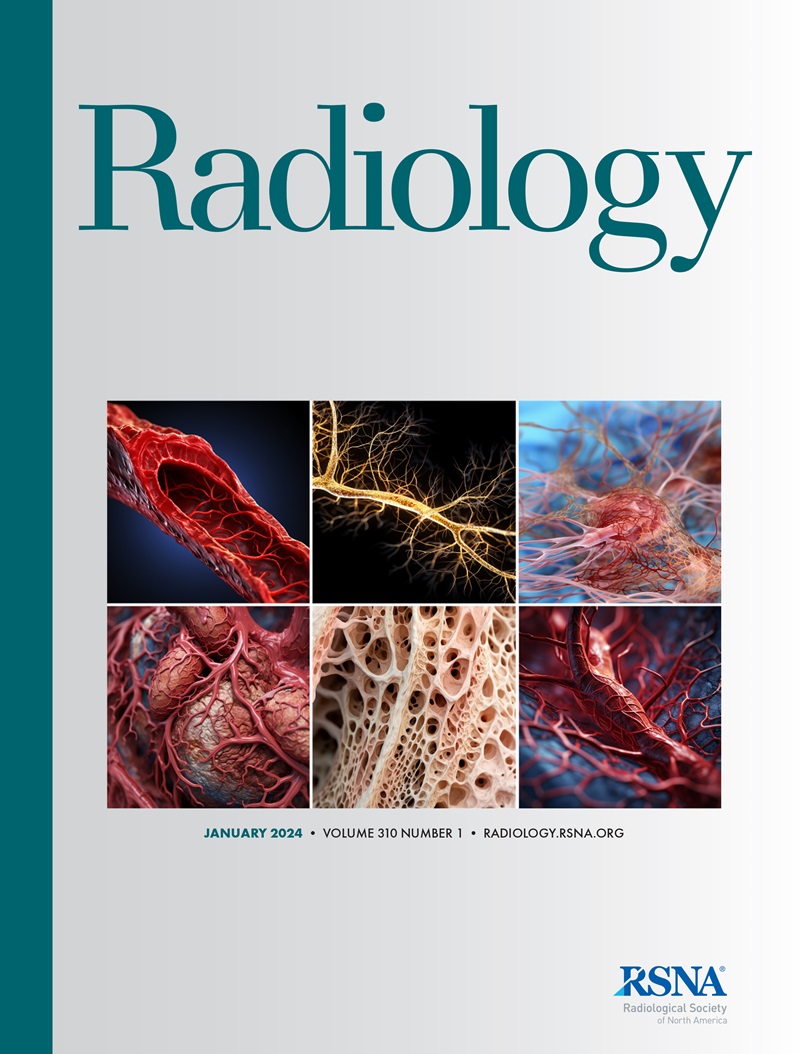"Fill States": PET-derived Markers of the Spatial Extent of Alzheimer Disease Pathology.
IF 12.1
1区 医学
Q1 RADIOLOGY, NUCLEAR MEDICINE & MEDICAL IMAGING
Elena Doering, Merle C Hoenig, Kathrin Giehl, Verena Dzialas, Grégory Andrassy, Abdelmajid Bader, Andreas Bauer, David Elmenhorst, Johannes Ermert, Silke Frensch, Elena Jäger, Frank Jessen, Philipp Krapf, Tina Kroll, Christoph Lerche, Julia Lothmann, Andreas Matusch, Bernd Neumaier, Oezguer A Onur, Alfredo Ramirez, Nils Richter, Frederik Sand, Lutz Tellmann, Hendrik Theis, Philip Zeyen, Thilo van Eimeren, Alexander Drzezga, Gérard N Bischof
下载PDF
{"title":"\"Fill States\": PET-derived Markers of the Spatial Extent of Alzheimer Disease Pathology.","authors":"Elena Doering, Merle C Hoenig, Kathrin Giehl, Verena Dzialas, Grégory Andrassy, Abdelmajid Bader, Andreas Bauer, David Elmenhorst, Johannes Ermert, Silke Frensch, Elena Jäger, Frank Jessen, Philipp Krapf, Tina Kroll, Christoph Lerche, Julia Lothmann, Andreas Matusch, Bernd Neumaier, Oezguer A Onur, Alfredo Ramirez, Nils Richter, Frederik Sand, Lutz Tellmann, Hendrik Theis, Philip Zeyen, Thilo van Eimeren, Alexander Drzezga, Gérard N Bischof","doi":"10.1148/radiol.241482","DOIUrl":null,"url":null,"abstract":"<p><p>Background Alzheimer disease (AD) progression can be monitored by tracking intensity changes in PET standardized uptake value (SUV) ratios of amyloid, tau, and neurodegeneration. The spatial extent (\"fill state\") of these three hallmark pathologic abnormalities may serve as critical pathophysiologic information, pending further investigation. Purpose To examine the clinical utility and increase the accessibility of PET-derived fill states. Materials and Methods This secondary analysis of two prospective studies used data from two independent cohorts: the Alzheimer's Disease Neuroimaging Initiative (ADNI) and the Tau Propagation over Time study (T-POT). Each cohort comprised amyloid-negative cognitively normal individuals (controls) and patients with subjective cognitive decline, mild cognitive impairment, or probable-AD dementia. Fill states of amyloid, tau, and neurodegeneration were computed as the percentages of significantly abnormal voxels relative to controls across PET scans. Fill states and SUV ratios were compared across stages (Kruskal-Wallis <i>H</i> test, area under the receiver operating characteristic curve analysis) and tested for association with the severity of cognitive impairment (Spearman correlation, multivariate regression analysis). Additionally, a convolutional neural network (CNN) was developed to estimate fill states from patients' PET scans without requiring controls. Results The ADNI cohort included 324 individuals (mean age, 72 years ± 6.8 [SD]; 173 [53%] female), and the T-POT cohort comprised 99 individuals (mean age, 66 years ± 8.7; 63 [64%] female). Higher fill states were associated with higher stages of cognitive impairment (<i>P</i> < .001), and tau and neurodegeneration fill states showed higher diagnostic performance for cognitive impairment compared with SUV ratio (<i>P</i> < .05) across cohorts. Similarly, all fill states were negatively correlated with cognitive performance (<i>P</i> < .001) and uniquely characterized the degree of cognitive impairment even after adjustment for SUV ratio (<i>P</i> < .05). The CNN estimated amyloid and tau accurately, but not neurodegeneration fill states. Conclusion Fill states provided reliable markers of AD progression, potentially improving early detection, staging, and monitoring of AD in clinical practice and trials beyond SUV ratio. Clinical trial registration no. NCT00106899 © RSNA, 2025 <i>Supplemental material is available for this article.</i> See also the editorial by Yun and Kim in this issue.</p>","PeriodicalId":20896,"journal":{"name":"Radiology","volume":"314 3","pages":"e241482"},"PeriodicalIF":12.1000,"publicationDate":"2025-03-01","publicationTypes":"Journal Article","fieldsOfStudy":null,"isOpenAccess":false,"openAccessPdf":"https://www.ncbi.nlm.nih.gov/pmc/articles/PMC11950890/pdf/","citationCount":"0","resultStr":null,"platform":"Semanticscholar","paperid":null,"PeriodicalName":"Radiology","FirstCategoryId":"3","ListUrlMain":"https://doi.org/10.1148/radiol.241482","RegionNum":1,"RegionCategory":"医学","ArticlePicture":[],"TitleCN":null,"AbstractTextCN":null,"PMCID":null,"EPubDate":"","PubModel":"","JCR":"Q1","JCRName":"RADIOLOGY, NUCLEAR MEDICINE & MEDICAL IMAGING","Score":null,"Total":0}
引用次数: 0
引用
批量引用
Abstract
Background Alzheimer disease (AD) progression can be monitored by tracking intensity changes in PET standardized uptake value (SUV) ratios of amyloid, tau, and neurodegeneration. The spatial extent ("fill state") of these three hallmark pathologic abnormalities may serve as critical pathophysiologic information, pending further investigation. Purpose To examine the clinical utility and increase the accessibility of PET-derived fill states. Materials and Methods This secondary analysis of two prospective studies used data from two independent cohorts: the Alzheimer's Disease Neuroimaging Initiative (ADNI) and the Tau Propagation over Time study (T-POT). Each cohort comprised amyloid-negative cognitively normal individuals (controls) and patients with subjective cognitive decline, mild cognitive impairment, or probable-AD dementia. Fill states of amyloid, tau, and neurodegeneration were computed as the percentages of significantly abnormal voxels relative to controls across PET scans. Fill states and SUV ratios were compared across stages (Kruskal-Wallis H test, area under the receiver operating characteristic curve analysis) and tested for association with the severity of cognitive impairment (Spearman correlation, multivariate regression analysis). Additionally, a convolutional neural network (CNN) was developed to estimate fill states from patients' PET scans without requiring controls. Results The ADNI cohort included 324 individuals (mean age, 72 years ± 6.8 [SD]; 173 [53%] female), and the T-POT cohort comprised 99 individuals (mean age, 66 years ± 8.7; 63 [64%] female). Higher fill states were associated with higher stages of cognitive impairment (P < .001), and tau and neurodegeneration fill states showed higher diagnostic performance for cognitive impairment compared with SUV ratio (P < .05) across cohorts. Similarly, all fill states were negatively correlated with cognitive performance (P < .001) and uniquely characterized the degree of cognitive impairment even after adjustment for SUV ratio (P < .05). The CNN estimated amyloid and tau accurately, but not neurodegeneration fill states. Conclusion Fill states provided reliable markers of AD progression, potentially improving early detection, staging, and monitoring of AD in clinical practice and trials beyond SUV ratio. Clinical trial registration no. NCT00106899 © RSNA, 2025 Supplemental material is available for this article. See also the editorial by Yun and Kim in this issue.

 求助内容:
求助内容: 应助结果提醒方式:
应助结果提醒方式:


